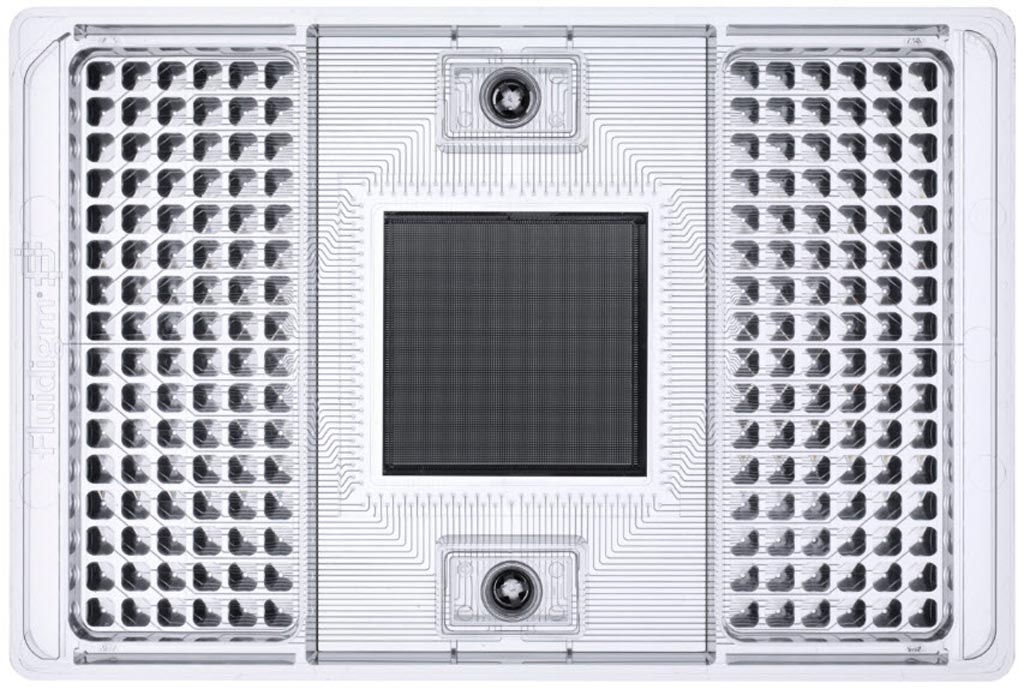Ultra-Early Inflammatory Biomarker Identified for TBI
By LabMedica International staff writers
Posted on 18 Jul 2017
Traumatic brain injury (TBI) is set to become the leading cause of neurological disability across all age groups. Currently, no reliable biomarkers exist to help diagnose the severity of TBI to identify patients who are at risk of developing secondary injuries.Posted on 18 Jul 2017
Improvements in emergency response times have increased TBI survivability, the necessity for discovering reliable markers by which to identify patients at risk of the development of secondary injuries and thus requiring more active monitoring and intervention remains a significant challenge.

Image: The 96.96 Dynamic Array IFC for Gene Expression, which enables 9,216 reactions using 96 samples and assay (Photo courtesy of Fluidigm).
Scientists at the University of Birmingham (Edgbaston, UK) took blood samples from 30 injured patients within the first hour of injury prior to the patient arriving at hospital. Subsequent blood samples were taken at intervals of four hours, 12 hours and 72 hours after injury. These blood samples were then screened for inflammatory biomarkers, which correlated with the severity of the injury using protein detection methods. In the laboratory, the team used a panel of 92 inflammation-associated human proteins when analyzing the blood samples, which were screened simultaneously.
The Proseek Multiplex Inflammation I was used to perform the multiplex proximity assay. Briefly, human serum together with a mix containing antibodies labelled with corresponding DNA oligonucleotides was incubated over night at 8 °C. Following this an extension mix containing proximity extension assay enzymes and polymerase chain reaction (PCR) reagents were added. Incubation plates were then placed on the thermal cycler for 17 cycles of DNA amplification. The 96.96 Dynamic Array IFC was primed and the protein expression program activated in the Fluidigm Biomark reader.
The team identified Cystatin D (CST5), AXIN1 and TNF-related apoptosis-inducing ligand (TRAIL) as novel early biomarkers of TBI. CST5 identified patients with severe TBI from all other cohorts and importantly was able to do so within the first hour of injury. AXIN1 and TRAIL were able to discriminate between TBI and healthy volunteers in less than one hour. They concluded that CST5, AXIN1 and TRAIL are worthy of further study in the context of a pre-hospital or pitch-side test to detect brain injury.
Lisa J. Hill, PhD, the leading author of the study said, “"Early and correct diagnosis of traumatic brain injury is one of the most challenging aspects facing clinicians. Being able to detect compounds in the blood, which help to determine how severe a brain injury is, would be of great benefit to patients and aid in their treatment. Currently, no reliable biomarkers exist to help diagnose the severity of TBI to identify patients who are at risk of developing secondary injuries that impair function, damage other brain structures and promote further cell death. Thus, the discovery of reliable biomarkers for the management of TBI would improve clinical interventions.” The study was published on July 10, 2017, in the journal Scientific Reports.
Related Links:
University of Birmingham













